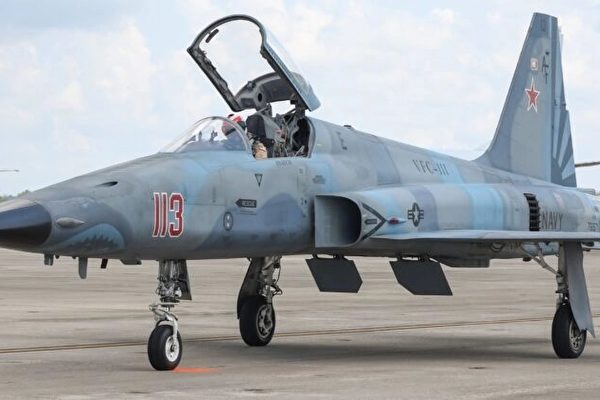The FBI Director Christopher Wray and NSA Director General Timothy D. Haugh have stated that recent cyberattacks by the Chinese Communist Party on critical infrastructure in the United States are preparations for potential conflicts with the United States.
In response to these signs and warnings, the United States is taking a proactive approach by dispersing troops to new locations, reinforcing facilities (adding more guards and missile defense systems), and strategically camouflaging, dispersing, and fortifying bases. Operating the Department of Defense (DOD) facilities in wartime mode conveys a strong message of readiness and deterrence.
However, the strategies of Army General Walter Short and Navy Admiral Husband E. Kimmel appear to still be in use to this day.
In February 1941, Short and Kimmel arrived in Hawaii to take command of Army and Navy forces. Faced with escalating tensions with Japan, they abandoned wartime postures of dispersing, fortifying, and camouflaging military facilities, opting instead to protect army and navy assets through administrative means by organizing ships and aircraft formations. In hindsight, these decisions were deemed significant strategic errors that led to the easily preventable attacks on aircraft and ships by the Japanese on December 7th, 1941.
History seems to be repeating itself. As tensions with the Chinese regime intensify, the U.S. Department of Defense has taken minimal action in terms of wartime preparedness despite alarming events such as Chinese spy balloons, suspicious foreigners buying land, unrelenting cyberattacks on critical U.S. infrastructure, and rising attempts of foreign nationals (often from China) at penetrating military facilities (including a recent disclosure of a Chinese citizen controlling drones monitoring U.S. submarine construction).
Recently, two Jordanians attempted to enter the Quantico Marine Corps Base in Virginia. Claiming to be “Amazon deliverymen,” they forcefully entered the base. The Navy sent vehicles to block their passage, intercepting and subsequently arresting the individuals and turning them over to Immigration and Customs Enforcement (ICE). These individuals were confirmed to not be U.S. citizens, with reports stating that one of them was previously flagged on a terrorist watchlist.
Local journalist Kelly Sienkowski initially reported on the incident in an article titled “ICE confirms attack on Quantico; Ignores questions on terrorist threat” published on May 16. Quantico Marine Corps Base houses Navy training facilities, the Presidential helicopter squadron, DEA offices, the FBI Academy, and critically, the FBI’s Hostage Rescue Team (HRT), which the FBI describes as the “federal law enforcement’s only full-time counterterrorism force.”
HRT serves as a crucial asset to respond to domestic terror incidents such as potential attacks by Chinese special forces within the United States. A former Quantico employee described the intrusion as a “rehearsal.”
The focus of Chinese actions is now shifting to Florida, where Chinese citizens have attempted to enter the Cape Canaveral Air Force Base and Naval facilities in Key West.
Cape Canaveral has two parts: the renowned Kennedy Space Center primarily for civilian space activities and the lesser-known Cape Canaveral Space Force Base engaged in confidential military and intelligence space operations. Chinese individuals were found diving near launch pads at these facilities, indicating the potential threat of using sniper rifles or rockets to sabotage or destroy space launch activities.
In 2020, three Chinese citizens were convicted for attempting to access Navy facilities in Key West, where it was later revealed these facilities were approximately 90 miles north of a Chinese spy base in Lourdes, Cuba. Chinese actions in Key West serve to assess U.S. readiness to detect and counter China’s covert expansion in Cuba and its influence operations in the Bahamas.
During the peak of the Cold War, the U.S. implemented strategies of dispersal, fortification, and camouflage in their European bases to shield them from attacks by Soviet special forces or aircraft and missile strikes. Reinforced and camouflaged facilities were ubiquitous, emphasizing defense against potential Soviet special forces assaults.
The “Return to the Pacific” strategy initiated in 2010 has not shown any visible signs of wartime preparation in the Pacific or the Department of Defense after 13 years. Congress has finally taken notice, compelling the Department of Defense to explain why China has constructed 400 fortified aircraft hideouts over the past decade while the U.S. has only built 22.
News photos released by the Department of Defense often depict neatly arranged aircraft in Pacific bases, reminiscent of Hawaii before the 1941 attack (although some photos have been removed).
The Department of Defense should ensure that all airports in the Pacific region, and even some mainland U.S. airports, provide fortified shelters for all aircraft, fuel depots, ammunition depots, crew quarters, command centers, and other vital facilities. Facilities like Andersen Air Force Base in Guam, which host a significant number of aircraft, should have more bases constructed, with a new air force base near Tinian in progress but requiring additional support.
On the U.S. mainland, all Navy fighter/attacker aircraft are concentrated at Naval Air Station Lemoore in California, close to the mysterious Chinese “bio-warfare” lab. These highly concentrated aircraft should be dispersed to multiple new bases.
Lastly, similar to building “dummy” cities on aircraft factory roofs during World War II, large-scale camouflage should be carried out to provide fortified, dispersed bases with greater resilience and readiness.
The author, retired Colonel John Mills, is a national security expert who has served in five eras: from the Cold War, peace dividend, war on terror, world disorder, to the current great power competition. He previously served as the Director of Cyber Policy, Strategy, and International Affairs at the Department of Defense. Mills is a senior fellow at the Center for Security Policy and the author of “The Nation Will Follow” and “War Against the Deep State.” Follow ColonelRETJohn on Substack, GETTR, and Truth Social.

